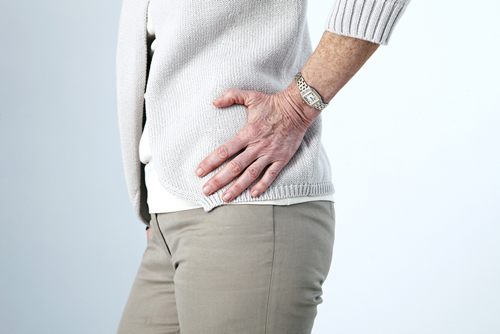MOM hips: why patients need to be monitored
Some MOM hips have been recalled and this has cast doubt on the status of all patients who have a MOM hip replacement. But do patients who feel fine and have no symptoms still need a check-up?

“Many patients assume that if they feel fine, there is no problem and no urgency. Unfortunately, things are not quite that simple. Some people who have had MOM hip replacements have no symptoms but they do have high levels of metal ions in their blood.
"The two components of the MOM hip rub against each other and release cobalt and chromium metal ions. We have used both of these metals in hip replacement prostheses for 70 years without any problems, but this is the first time that such large numbers of hips have been used with both metal components coming into direct contact and rubbing together.
"This was unexpected; this friction releases doses of metal ions that often exceed safety limits, sometimes by a long way. Although they are fairly inert, in large quantities, there is concern that one of the metals is cancer-causing and we now also realise they can stimulate an aggressive inflammatory response.”
Measuring blood levels of cobalt and chromium
“Some of our research has demonstrated that the patients with the highest levels of metal particles in their blood are the most likely to experience MOM hip failure. Therefore measurement of blood metal ions is good predictor of what will happen to individual patients.
"We recommend that patients are monitored regularly and may need an MRI scan to detect any changes in the tissue around their MOM hip replacement, and once changes become apparent, we suggest they have a hip revision operation sooner rather than later.”
The problem seems to arise when the cobalt and chromium act as an irritant to the tissue around the MOM hip; this inflammation can be very destructive and can attack the muscle.
“These changes are very difficult to pick up on normal X-rays and they can be silent for a long time. This means that the damage is progressing but the patient feels no pain and is completely well.
"If these patients do not have a MARS MRI scan, or have their blood level of metal ions measured, they could experience significant tissue deterioration before they have a chance to have a hip revision operation. After surgery, they can be at risk of not recovering full muscle function.”
The work of The London Implant Retrieval Centre (LIRC)
Professor Hart has been instrumental in setting up the LIRC, a research centre at The Royal National Orthopaedic Hospital and UCL that analyses MOM hips that have been removed and the associated data from patients who have experienced MOM hip replacement failure.
“This is now a worldwide centre. We’ve received hips from New Zealand, Singapore and we regularly receive hips from the US and elsewhere in Europe, as well as from across the UK.
"We’ve published 25 papers on the subject just this year and we have 300 surgeons contributing data to the research centre.”
The LIRC had already collected data on 1700 patients with MOM hips by the autumn of 2012.
“Personally I’ve seen about 500 patients with problematic MOM hips, some at The London Clinic but most in my NHS practice. Of course, this is the tip of the iceberg.”
At The London Clinic, Mr Hart has easy access to expert radiologists, microbiologists, and the clinical chemistry facility available in the laboratory services on site.
“We often have a multi-disciplinary meeting, which The London Clinic has helped set up, so that we can discuss an individual approach to each patient.
"The work that we are doing is going to benefit surgeons in other hospitals all around the world. I’ve given advice to orthopaedic surgeons all over the world on this issue; I flew to Chicago, four of us sat around a table and our discussion was beamed live to all the surgeons in the United States.
"The London Clinic has helped these efforts enormously by creating a meeting room that has international conference call facilities. We have the potential here to offer advice to surgeons anywhere in the world based on what we’ve learned.
"In fact, The Clinic is leading the way in disseminating information to the international medical community about the MOM hip problems and how to help patients with concerns or symptoms.”
Disclaimer
Any views expressed in this article are those of the featured specialist(s) and should not be considered to be the views or official policy of The London Clinic.